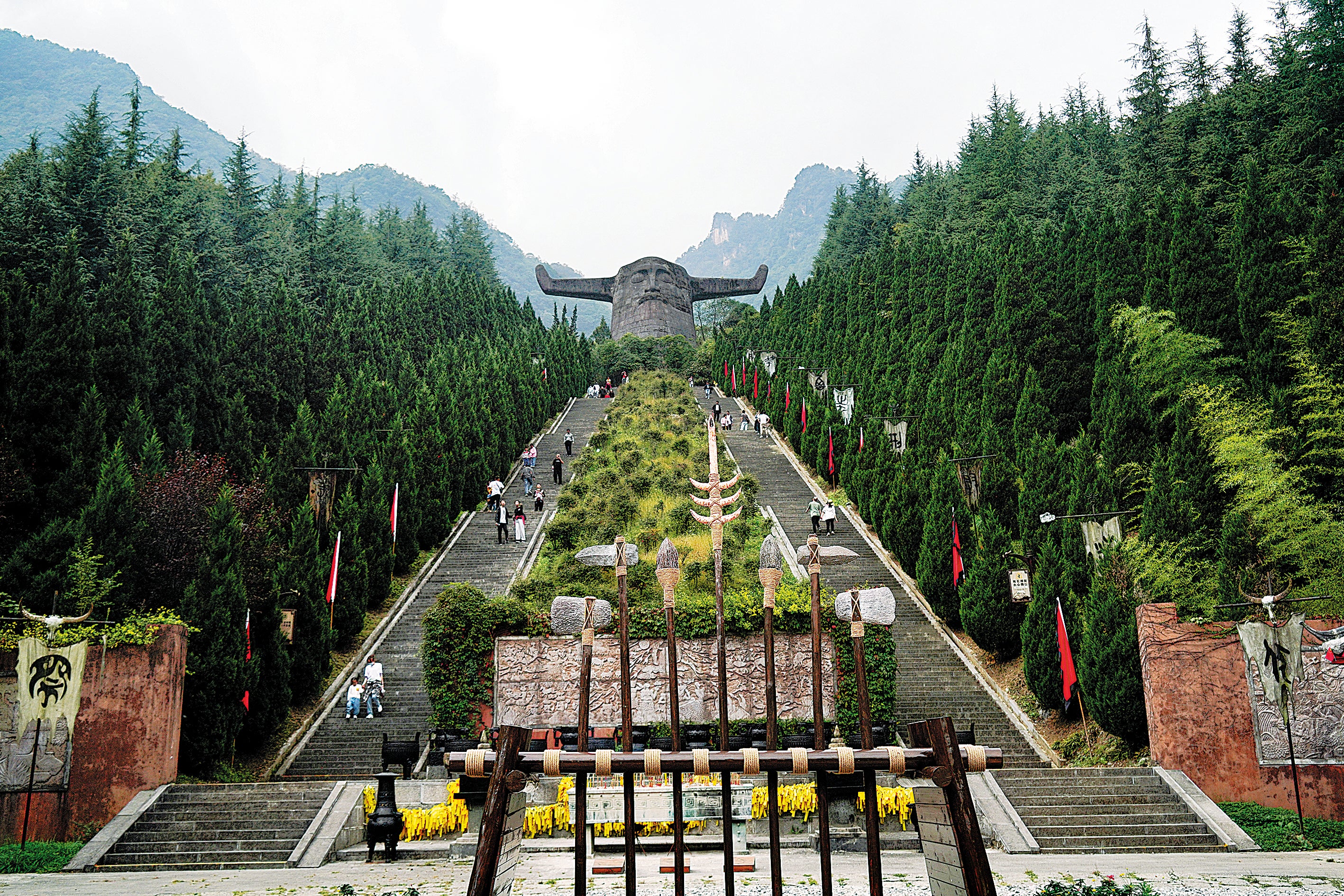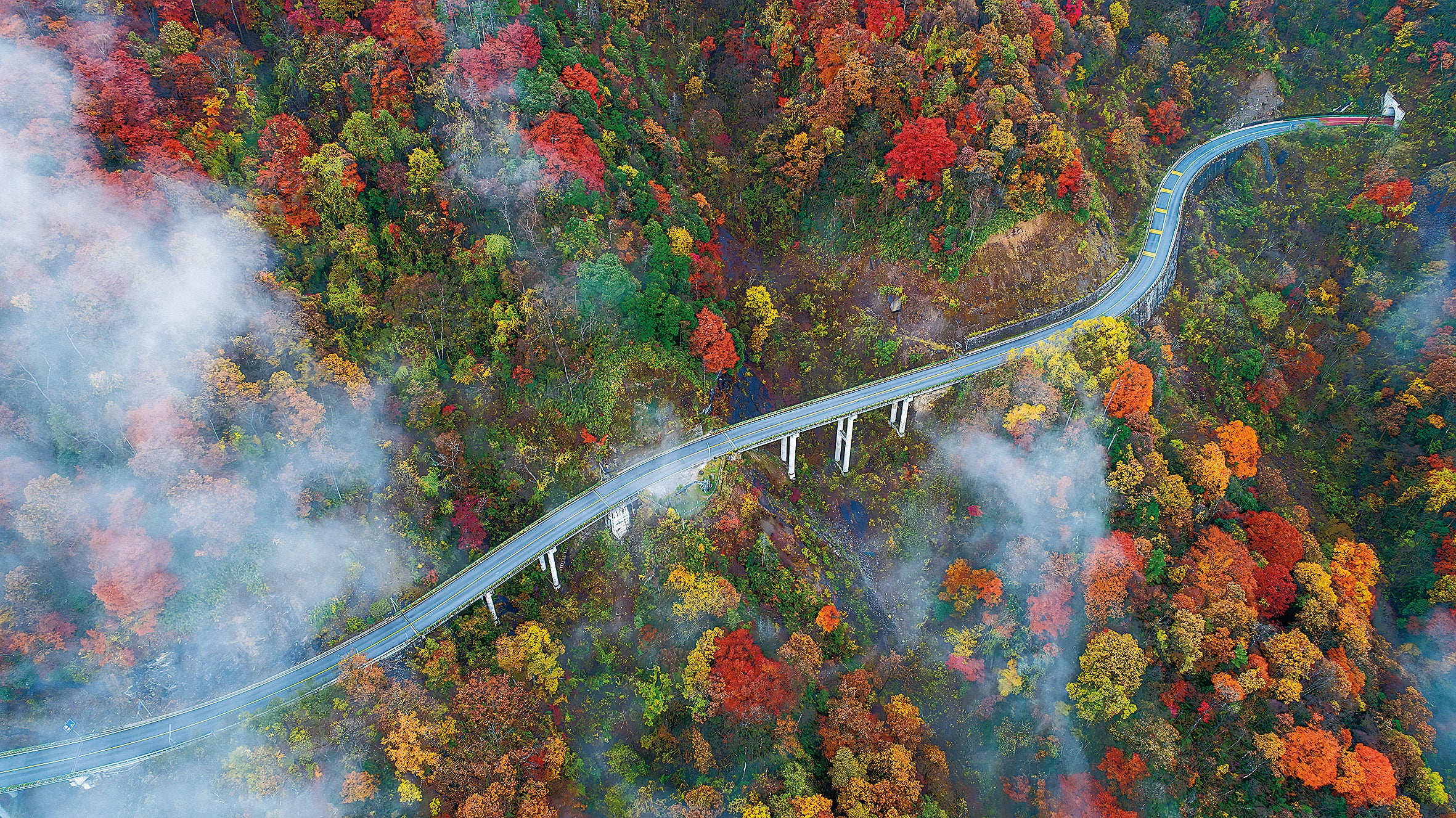Natural beauty leaves legend of a wild man in the shade
THE ARTICLES ON THESE PAGES ARE PRODUCED BY CHINA DAILY, WHICH TAKES SOLE RESPONSIBILITY FOR THE CONTENTS

Shennongjia is said to be the place where the mythical Emperor Yan once lived. Some visitors hope that they may encounter the legendary wild man, China’s equivalent of Bigfoot, in the remote mountains and virgin forests.
They may not see any such creature, but they are attracted by Shennongjia’s vibrant ecology, rich biodiversity and karst landforms.
The nature of Shennongjia’s beauty varies over the year as time takes its course. Tourists can enjoy flower blossoms in spring, be shaded from the summer heat, appreciate red leaves in autumn and go skiing in winter.
In 2016 China announced that it would build 10 pilot national parks for ecosystem preservation, including in Shennongjia Forestry District, Hubei province.
Trips in such a mountainous region depend very much on the weather. An early rise by visitors may be rewarded with a stunning view of a sea of clouds beneath.
The natural beauty of karst landforms is ubiquitous. There are waterfalls, pools and a 56ft-high arch that resembles a bridge crafted by nature after centuries of rain erosion.
Visitors can hike in a forest, climb a mountain and explore a large, dark cave to listen to the sounds of swallows nestling. Tourists may come across an area in which golden snub-nosed monkeys that are ill or injured are treated before they go back into the forest.
Guanmenshan Scenic Area showcases rich biodiversity, with a natural ecology museum, a garden with precious plants and areas that animals such as deer and giant salamanders inhabit. On a zigzag wooden plank road in the forest are small exhibition boards that present information about bird species, and there are fish ponds. It is a perfect place to discover natural science.

Being in Dajiuhu National Wetland Park when the wetlands are shrouded in mist early in the morning is like being in a wonderland, with reflections in the water and mountains and reed marshes as the backdrop.
Chinese proclaim themselves yan huang zi sun, the offspring of mythical Emperor Yan (Shennong) and the Yellow Emperor. Shennongjia was so named because it is said to be the place where Shennong tasted various herbs to figure out how to use them to cure sickness. Shennong, often depicted with the horns of an ox, was a man of all trades. He invented farm tools and discovered tinder and tea, and made cooking utensils out of pottery.
In Shennong Altar Scenic Area, a long stone staircase leads to a 69ft-high stone sculpture of Shennong’s head. With two ox horns, his eyes are closed and his chin raised as if he is lost in thought. Looking up, visitors will gaze in awe at the head as they climb the stairs. They can also appreciate murals depicting Shennong’s legend, with a row of traditional Chinese sacrificial vessels to the side.
Legends similar to that of the wild man can be found all over the globe, ranging from Bigfoot in North America to Yeti in the Himalayan mountains. Between 1976 and 1981 the Chinese Academy of Sciences organised three large-scale scientific investigations – and anthropologists, zoologists and botanists were sent to the region’s thick forest.
Scientists have collected hair, footprints and excrement suspected of belonging to the wild man, but some experts argue that most were left by bears, monkeys or even human beings. What they did discover was the area’s rich biodiversity. During the second mission in 1977, the golden snub-nosed monkey was observed in Shennongjia.
In 1999 Chinese authorities announced that there is no wild man in Shennongjia. Nevertheless, in 2016 the wild man legend was added to Hubei’s intangible cultural heritage list. However, these days it is Shennongjia’s flora and fauna that are its biggest drawcard.
Previously published on Chinadaily.com.cn
